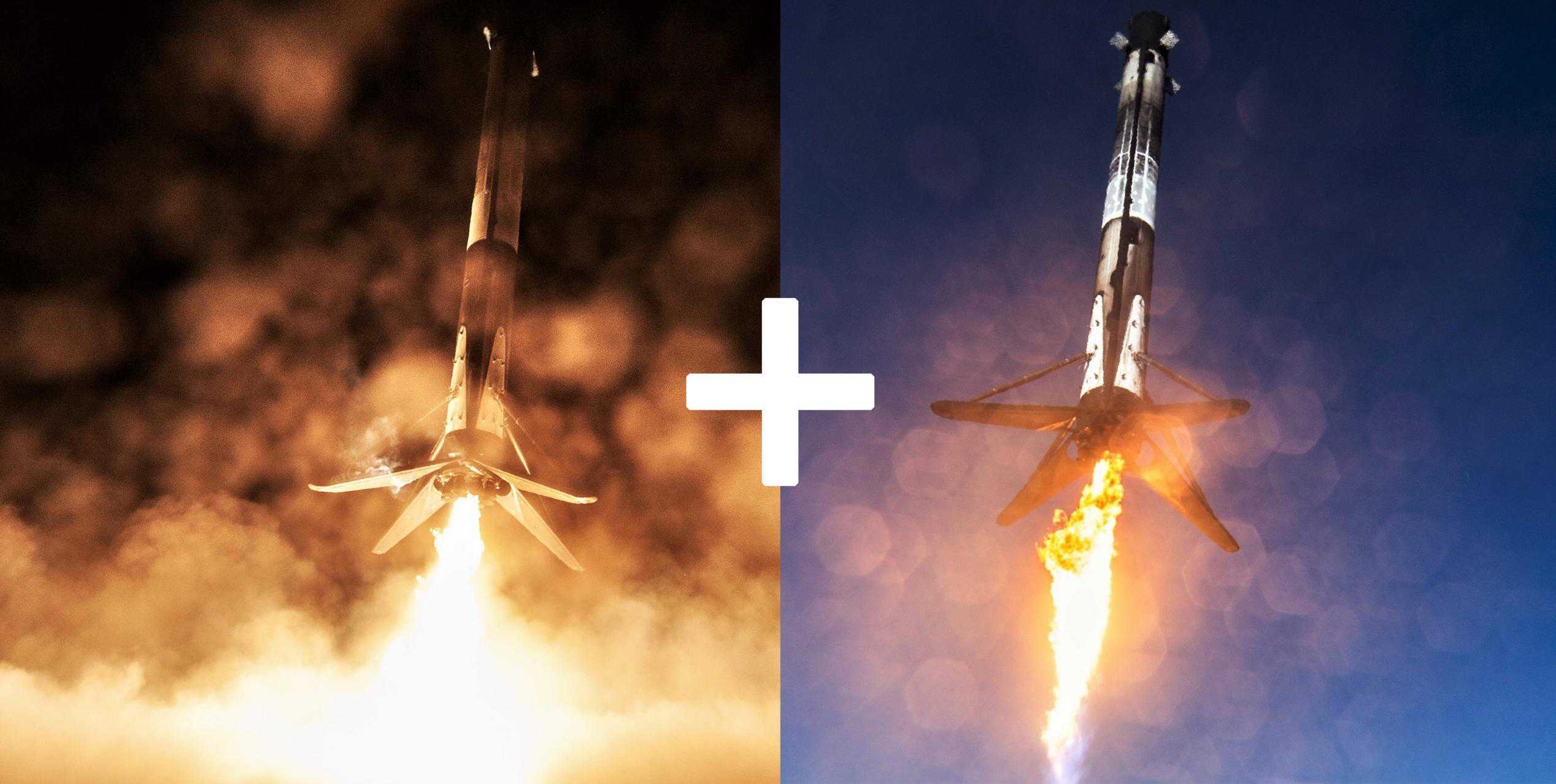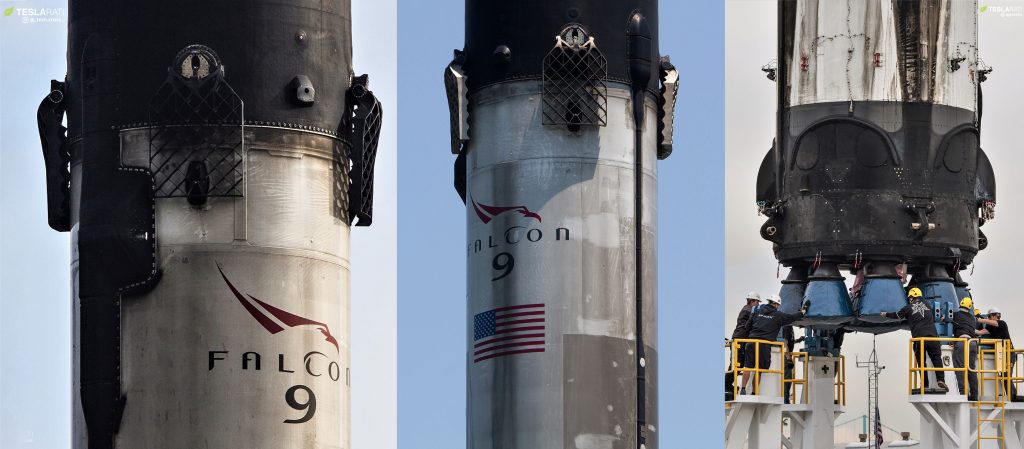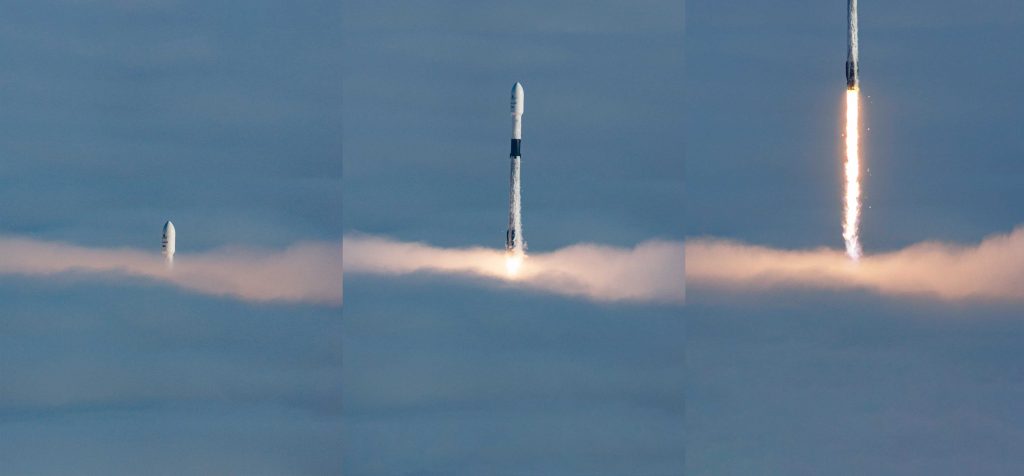

News
SpaceX set for back-to-back weekend launches: Crew Dragon abort test, 60 more Starlink satellites
Two SpaceX Falcon 9 rockets are currently on track to launch back-to-back missions just a handful of days from now, potentially supporting Crew Dragon’s second flight test ever and yet another Starlink satellite launch a little over two days from now.
Known as Crew Dragon’s In-Flight Abort (IFA) test, the first mission is scheduled to lift off from Kennedy Space Center Launch Complex 39A (KSC LC-39A) no earlier than (NET) 8 am EST (13:00 UTC), January 18th and will almost certainly produce some spectacular fireworks (even more so than usual). During the test, SpaceX’s newest flightworthy Crew Dragon spacecraft will attempt to escape from a supersonic Falcon 9 rocket, exceptionally challenging conditions that will almost certainly result in the immediate (intentional) destruction of Falcon 9’s upper stage and booster.
A few miles to the north, SpaceX is preparing an entirely different Falcon 9 rocket for the third launch of 60 upgraded Starlink v1.0 satellites in barely two months, scheduled to lift off NET 12:20 pm EST (17:20 UTC), January 20th from Cape Canaveral Air Force Station (CCAFS) Launch Complex 40 (LC-40). While the duo of launches will break no records for SpaceX, they will certainly set the tone the company is aiming to keep throughout the rest of 2020.
On January 11th, SpaceX successfully fired up Falcon 9 B1046 at Pad 39A, performing the booster’s fifth routine static fire test (if not more) in approximately two years. The first Block 5 booster built and flown by SpaceX, B1046 has performed three orbital-class launches since it debuted in May 2018 and even became the first Falcon 9 booster to launch three times in December 2018.
Since that milestone, B1046 spent several months at SpaceX’s Hawthorne, CA factory undergoing inspections and refurbishment. At some point, SpaceX assigned the thrice-flown booster to support Crew Dragon’s In-Flight Abort (IFA) test – effectively a death sentence – and shipped the booster to Florida, where it publicly appeared for the first time in months on October 3rd, 2019. Given that four more Falcon 9 boosters have now successfully performed three (or even four) orbital-class launches each, B1046’s now-imminent demise is certainly disappointing but remains extremely pragmatic.
Sure, B1046 could have theoretically flown several more orbital-class launches before it might have otherwise been quietly retired, but it is still the first Falcon 9 Block 5 booster qualified for flight. Although SpaceX and CEO Elon Musk were explicit that Block 5 would be the last major design iteration for the Falcon family of launch vehicles, that definitely doesn’t rule out tweaks – minor to major – that have likely been implemented since the rocket’s flight debut. In the 20 months since that debut, Falcon 9 and Heavy Block 5 boosters have performed more than two dozen launches and landings and checked off several reusability milestones.

In simple terms, those dozens of flights and reuses all translate to lots and lots (and lots) of high-fidelity data. That data – and often the hardware it’s connected to – can be used to extensively cross-check and improve the Falcon 9 and Heavy engineering models SpaceX created while designing, producing, and ground testing the Block 5 upgrade prior to its flight debut. It can also be used to upgrade to the rocket where needed, especially useful when it comes to reusability.
Although Falcon Block 5 boosters already appear to be exceptionally reliable and reusable, having checked off multiple third-flight and fourth-flight milestones in the last year, there is always room for improvement – especially if Musk is still serious about his long-held goal of launching the same Falcon 9 booster twice in ~24 hours. Along those lines, it’s safe to assume that at least some of the boosters that come off the assembly line after B1046 feature design tweaks meant to optimize for reliability and reusability, among other things.
For the most part, it seems that SpaceX is no longer aggressively pursuing ~24-hour booster turnaround, although they very likely intend to continue cutting the work hours required for (and thus the cost of) each reuse. B1046’s demise may shrink SpaceX’s reusable rocket fleet by one but the company will continue to debut the occasional new booster throughout 2020, ultimately ensuring that the fleet grows over time. Ultimately, if SpaceX only needs to spend a week or two inspecting and refurbishing each Block 5 booster and has a fleet of 10-20 or more, 24-hour turnaround may not even be necessary to achieve the desired results it was meant to represent.

Finally, SpaceX aims to launch its fourth batch of 60 Starlink satellites overall as few as ~52 hours after Falcon 9’s Crew Dragon In-Flight Abort mission and nextspaceflight.com reports that Falcon 9 B1051 will support the Starlink V1 L3 mission – the booster’s third orbital-class launch in ~10 months. Thankfully, B1051 – formerly tasked with supporting Crew Dragon’s Demo-1 orbital launch debut in March 2019 and Canada’s Radarsat Constellation Mission (RCM) in June 2019 – will almost certainly be attempting its second drone ship landing and third recovery overall.
Check out Teslarati’s Marketplace! We offer Tesla accessories, including for the Tesla Cybertruck and Tesla Model 3.
News
Tesla UK sales see 14% year-over-year rebound in June: SMMT data
The SMMT stated that Tesla sales grew 14% year-over-year to 7,719 units in June 2025.

Tesla’s sales in the United Kingdom rose in June, climbing 14% year-over-year to 7,719 units, as per data from the Society of Motor Manufacturers and Traders (SMMT). The spike in the company’s sales coincided with the first deliveries of the updated Model Y last month.
Model Y deliveries support Tesla’s UK recovery
Tesla’s June performance marked one of its strongest months in the UK so far this year, with new Model Y deliveries contributing significantly to the company’s momentum.
While the SMMT listed Tesla with 7,719 deliveries in June, independent data from New AutoMotive suggested that the electric vehicle maker registered 7,891 units during the month instead. However, year-to-date figures for Tesla remain 2% down compared to 2024, as per a report from Reuters.
While Tesla made a strong showing in June, rivals are also growing. Chinese automaker BYD saw UK sales rise nearly fourfold to 2,498 units, while Ford posted the highest EV growth among major automakers, with a more than fourfold increase in the first half of 2025.
Overall, the UK’s battery electric vehicle (BEV) demand surged 39% to to 47,354 units last month, helping push total new car sales in the UK to 191,316 units, up 6.7% from the same period in 2024.
EV adoption accelerates, but concerns linger
June marked the best month for UK car sales since 2019, though the SMMT cautioned that growth in the electric vehicle sector remains heavily dependent on discounting and support programs. Still, one in four new vehicle buyers in June chose a battery electric vehicle.
SMMT Chief Executive Mike Hawes noted that despite strong BEV demand, sales levels are still below regulatory targets. “Further growth in sales, and the sector will rely on increased and improved charging facilities to boost mainstream electric vehicle adoption,” Hawes stated.
Also taking effect this week was a new US-UK trade deal, which lowers tariffs on UK car exports to the United States from 27.5% to 10%. The agreement could benefit UK-based EV producers aiming to expand across the country.
News
Tesla Model 3 ranks as the safest new car in Europe for 2025, per Euro NCAP tests
Despite being on the market longer than many of its rivals, the Tesla Model 3 continues to set the bar for vehicle safety.

The Tesla Model 3 has been named the safest new car on sale in 2025, according to the latest results from the Euro NCAP. Among 20 newly tested vehicles, the Model 3 emerged at the top of the list, scoring an impressive 359 out of 400 possible points across all major safety categories.
Tesla Model 3’s safety systems
Despite being on the market longer than many of its rivals, the Tesla Model 3 continues to set the bar for vehicle safety. Under Euro NCAP’s stricter 2025 testing protocols, the electric sedan earned 90% for adult occupant protection, 93% for child occupant protection, 89% for pedestrian protection, and 87% for its Safety Assist systems.
The updated Model 3 received particular praise for its advanced driver assistance features, including Tesla’s autonomous emergency braking (AEB) system, which performed well across various test scenarios. Its Intelligent Speed Assistance and child presence detection system were cited as noteworthy features as well, as per a WhatCar report.
Other notable safety features include the Model 3’s pedestrian-friendly pop-up hood and robust crash protection for both front and side collisions. Euro NCAP also highlighted the Model 3’s ability to detect vulnerable road users during complex maneuvers, such as turning across oncoming traffic.
Euro NCAP’s Autopilot caution
While the Model 3’s safety scores were impressive across the board, Euro NCAP did raise concerns about driver expectations of Tesla’s Autopilot system. The organization warned that some owners may overestimate the system’s capabilities, potentially leading to misuse or inattention behind the wheel. Even so, the Model 3 remained the highest-scoring vehicle tested under Euro NCAP’s updated criteria this year.
The Euro NCAP’s concerns are also quite interesting because Tesla’s Full Self-Driving (FSD) Supervised, which is arguably the company’s most robust safety suite, is not allowed for public rollout in Europe yet. FSD Supervised would allow the Model 3 to navigate inner city streets with only minimal human supervision.
Other top scorers included the Volkswagen ID.7, Polestar 3, and Geely EX5, but none matched the Model 3’s total score or consistency across categories. A total of 14 out of 20 newly tested cars earned five stars, while several models, including the Kia EV3, MG ZS, and Renault 5, fell short of the top rating.
Elon Musk
Why Tesla’s Q3 could be one of its biggest quarters in history
Tesla could stand to benefit from the removal of the $7,500 EV tax credit at the end of Q3.

Tesla has gotten off to a slow start in 2025, as the first half of the year has not been one to remember from a delivery perspective.
However, Q3 could end up being one of the best the company has had in history, with the United States potentially being a major contributor to what might reverse a slow start to the year.
Earlier today, the United States’ House of Representatives officially passed President Trump’s “Big Beautiful Bill,” after it made its way through the Senate earlier this week. The bill will head to President Trump, as he looks to sign it before his July 4 deadline.
The Bill will effectively bring closure to the $7,500 EV tax credit, which will end on September 30, 2025. This means, over the next three months in the United States, those who are looking to buy an EV will have their last chance to take advantage of the credit. EVs will then be, for most people, $7,500 more expensive, in essence.
The tax credit is available to any single filer who makes under $150,000 per year, $225,000 a year to a head of household, and $300,000 to couples filing jointly.
Ending the tax credit was expected with the Trump administration, as his policies have leaned significantly toward reliance on fossil fuels, ending what he calls an “EV mandate.” He has used this phrase several times in disagreements with Tesla CEO Elon Musk.
Nevertheless, those who have been on the fence about buying a Tesla, or any EV, for that matter, will have some decisions to make in the next three months. While all companies will stand to benefit from this time crunch, Tesla could be the true winner because of its sheer volume.
If things are done correctly, meaning if Tesla can also offer incentives like 0% APR, special pricing on leasing or financing, or other advantages (like free Red, White, and Blue for a short period of time in celebration of Independence Day), it could see some real volume in sales this quarter.
You can now buy a Tesla in Red, White, and Blue for free until July 14 https://t.co/iAwhaRFOH0
— TESLARATI (@Teslarati) July 3, 2025
Tesla is just a shade under 721,000 deliveries for the year, so it’s on pace for roughly 1.4 million for 2025. This would be a decrease from the 1.8 million cars it delivered in each of the last two years. Traditionally, the second half of the year has produced Tesla’s strongest quarters. Its top three quarters in terms of deliveries are Q4 2024 with 495,570 vehicles, Q4 2023 with 484,507 vehicles, and Q3 2024 with 462,890 vehicles.
-

 Elon Musk4 days ago
Elon Musk4 days agoTesla investors will be shocked by Jim Cramer’s latest assessment
-

 News1 week ago
News1 week agoTesla Robotaxi’s biggest challenge seems to be this one thing
-

 Elon Musk2 weeks ago
Elon Musk2 weeks agoFirst Look at Tesla’s Robotaxi App: features, design, and more
-

 News2 weeks ago
News2 weeks agoSpaceX and Elon Musk share insights on Starship Ship 36’s RUD
-

 News2 weeks ago
News2 weeks agoWatch Tesla’s first driverless public Robotaxi rides in Texas
-

 News1 week ago
News1 week agoWatch the first true Tesla Robotaxi intervention by safety monitor
-

 News2 weeks ago
News2 weeks agoTesla has started rolling out initial round of Robotaxi invites
-

 Elon Musk2 weeks ago
Elon Musk2 weeks agoTesla to launch in India in July with vehicles already arriving: report


















